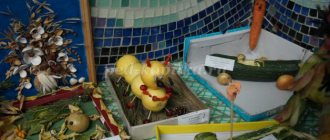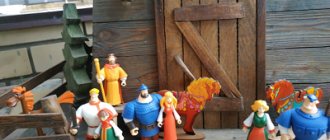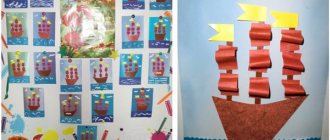My favorite city - essay
Everyone has their own friend. Friends are different. There are friends - books or buildings in your favorite city.
Option 1 – St. Petersburg
Our town! He is beautiful, poetic, he is magical at night, he is beautiful in the morning. My city is my friend, I love it as a person. When I feel very, very bad, I go to the streets of my city... St. Petersburg...
My Petersburg is an openwork maple leaf fluttering on the granite of the Fontanka, warmed by the autumn sun; these are the old steps of the Mikhailovsky Castle, through the deep cracks of which blades of grass scorched by the sun make their way; this is the barely audible echo of heels on the bright, sun-striving (so elegant!) street of Zodchego Russia...
My Petersburg is the first shining puddle on the dark palm of the square, the water in it reflects the golden sparkles of the good Isaac... He raises his dark columns above the square - large, beautiful... Through the patterned bars of his high windows the river sparkles with blue waves.
Under the cooing of pigeons and the inaudible splash of the Neva, I slowly, thoughtfully walk around the square... When I walk along your straight streets, my city, when I plunge into the gold of your parks and squares, my city, I feel with my whole being how dear you are to me, my my most faithful friend, my city...
And these gray houses with stucco balconies, and old lanterns on small bridges over canals, and sun spots on the cobblestones of quiet streets, and the dim arches of old houses; and there, if you enter the fragrant gloom of the courtyard and raise your head, you will see a bright blue square of the autumn sky falling high, high on you; and the last tight buds of carnations in red baskets on the asphalt clean from the rain, and the cold cast iron of the lace lattice of the bridge - everything is so sadly beloved, everything is so achingly close...
My Petersburg is the flickering glare of the last gentle rays on Pushkin’s hand at the Russian Museum, it is the restrained noise of voices, the breath of perfume and the rustling of dresses in the opera, when another moment of trembling anticipation - and the chandeliers solemnly go out, the sounds of the overture sound...
Like all good things, the performance quickly ends, the last spectators leave, the large lanterns above the entrance to the fairy-tale world go out, the square becomes empty, it’s already very late... Only one person’s footsteps can be heard on the deserted streets.
I come closer to him and in the dim light I see the tired, melancholy look of his eyes, the wind scattered strands of his brown-amber curls across his high, beautiful forehead, his lips slowly move in time with his steps, uttering melodious phrases: “Among this mysterious vulgarity, say, What should I do with you?
Incomprehensible and unique, like a smoky blue fan.” I love my city because it keeps the warmth of his hand on its granite walls.
My Petersburg is a volume of Blok’s poems on the bench of the most remote alley of the park, my favorite poems there are laid out with yellowed openwork maple leaves that Smell of Petersburg...
Option 2 – Rostov-on-Don
My favorite city is Rostov-on-Don. It is located on the right bank of the Don River. My city is often called the “gate of the Caucasus” because trade routes to the Caucasus go through it.
The city is home to more than a million residents. It consists of eight territorial units - districts. My city is warm and gentle in the summer and snowy and frosty in the winter. The city was awarded the title “city of military glory.”
One of the special places in my city is the theater square. It houses the largest observation wheel in the south of Russia. There is also a theater named after Maxim Gorky, it is made in the form of a caterpillar tractor, for which it has become famous throughout the world, and a smaller copy of it is kept in the London Museum of World Architecture.
Also in the city, the ancient Armenian church “Surb-Khach” is in particular demand. She is over 200 years old. At its foot there is a spring in which people bathe all year round.
In 2022, six FIFA World Cup matches were held on the left bank of the Don at the new 45,000-capacity Rostov Arena stadium. Brazilians, Swiss, Croatians, Icelanders, Mexicans, Koreans, Belgians and Japanese came here. It was a real celebration of football.
I love my city because I grew up here, I know every street, every alley of my city. I have warm memories from childhood associated with this or that place. He is very handsome and friendly. He is multinational. It is cultural and fascinating. This is my favorite city!
Option 3 – Sevastopol
The city in which I live has a very long, rich and heroic history. This is a city of ships and anchors, a city of salty wind and spacious embankments.
I live in a city glorified in many wonderful songs, sung in the books of such famous writers as Alexander Green, Konstantin Paustovsky. My favorite writer Vladislav Krapivin also wrote a lot about him.
Often, walking along familiar streets, I imagine myself as the hero of another Krapivinsk book. After all, I am the same tanned boy with scratched knees and sun-bleached hair, like many of the tomboys who have left the pages of Krapivin’s works.
My town is very beautiful. He has his own character. At first glance, he seems serious and unapproachable, like an honored warrior in a ceremonial uniform, whose chest is hung with ringing orders and medals.
But in fact, like all real soldiers, my city is cheerful and very kind, because good and sympathetic people live in it. Very, very many good people!
You probably guessed where I live? My city bears the glorious name of Sevastopol. And I love him very much.
PROJECT “MY CITY” (PREPARATION GROUP)
Transcript
1 Municipal preschool educational institution kindergarten 1 “CAMOMILE” of the city of Furmanov PROJECT “MY CITY” (PREPARATORY GROUP) Educator Mateeva E.R.
2
3 Project in the preparatory group Topic: My city Type of project: open, research, short-term. It is carried out inside the preschool educational institution in contact with the families of the pupils. Project participants: children of preparatory group 4, teacher, parents. Implementation period: short-term (from ) Relevance of the project: An integral part of any education system is the education of patriotism. Patriotism is love and affection for the Motherland, devotion to it, responsibility for it, the desire to work for its benefit, to protect and increase wealth. Love for the Fatherland begins with love for one’s small homeland - the place where a person was born. The basic stage of developing love for the Motherland in children is their accumulation of social experience of life in their city, assimilation of the norms of behavior and relationships accepted in it, and familiarization with the world of its culture. Preschool childhood can be called a time of daily discoveries. Adults should give children the joy of these discoveries, filling them with ideological and educational content, which should contribute to the formation of moral foundations and a sense of patriotism. By expanding the horizons of what children know, we plant in their hearts a spark of love for their native land, for the Motherland. The goal of the project: - development of children’s cognitive activity, increasing interest in the history and culture of our city, developing a sense of patriotism; - nurturing love for the Fatherland, for the city in which we live, pride in its culture, - formation of a social position as a participant and creator of public life; - formation of interest in collective, playful, productive, creative activities.
4
5 Resource support: Postcards, booklets, photographs about your hometown, region Photos of the streets of your hometown Albums with views of streets on which buildings, architectural ensembles, and monuments are familiar to everyone. Slides, films about memorable places of the “small Motherland” Works of art and literary materials Didactic games Card index of didactic games: “My City” Purpose: to consolidate children’s knowledge about their hometown, attractions, favorite places for recreation “Who will get to the river faster?” (to the station, to the library, to school) Goal: to strengthen children’s ability to navigate the area, choose the right route to the right place, develop memory and attention. “Attractions of the native city” Goal: to consolidate children’s knowledge about the attractions of the city of Furmanov; develop attention, memory, coherent speech. “Paired pictures” Goal: to consolidate children’s knowledge about the sights of the city, the ability to choose the right pair for their picture. (composing a picture from several parts like a puzzle) “What would happen if all the streets were without names” Goal: to consolidate children’s knowledge that every street should have a name; consolidate children's knowledge of what street they live on; develop attention; memory. Lotto “My Favorite City” Goal: to consolidate children’s knowledge about the city’s attractions, memorable places, recreational areas, favorite streets; develop the ability to work in a team; develop coherent speech, memory, thinking, attention.
6
7 Contents of the project Preparatory stage: identify the level of children’s knowledge about their hometown through questions and conversations; compiling lists of information sources, reference books, methodological literature, fiction; preparation of necessary printed materials; informing parents about children’s participation in the project, involving them in the project; determining the time to work on the project; selection of Internet resources, saving links; Action plan: 1. Statement of the problem: What do we know about our hometown? What do we want to know? Defining future activities: How can we find answers to the questions? 2. Planning activities for children together with adults, determining means and methods for implementing the project. 3. Project implementation by children and adults. 4. Discussion of the results. 5. Determination of design prospects. Activity stage Cognitive development: To form a sustainable interest and caring attitude towards one’s hometown, a sense of patriotism, a sense of pride in being a citizen of the city of Furmanov. Expand children's understanding of the sights of their hometown. Form a perception of a holistic picture of the world, broaden the horizons of children; introduce the names of people who glorified their hometown. Didactic games: “My city”, “Who will get to the river faster?” (to the station, will reach the library, school, theater) “Sights of my native city”, “My address”, “Residential, non-residential”, “Paired pictures” “What would happen if all the streets were without names.” Lotto “My Favorite City”, looking at illustrations of buildings for various purposes, photographs of buildings in the immediate environment. Proverbs and sayings about friendship, riddles about city buildings. City Tour.
8
9 Speech development. Develop all components of children’s oral speech in various forms and types of children’s activities Conversations: “Interesting things nearby”, “Our street”, “Houses are different”, “What is there for children in our city” Social and communicative development. To cultivate love for one’s hometown, a sense of respect for one’s people, and a caring attitude towards what has been done by their labor. S/r game “Journey along the street”, Conversations: “All children need to know how to walk along the street”, “What is produced in our city”, Excursions to memorable places associated with the lives of heroes of labor. Artistic and aesthetic development. Develop children's productive activities and children's creativity. “Our street”, “Different houses”, “My city”. Physical development. Promote the development of children's motor activity and coordination. Outdoor games at the request of children. Project methods: Practical: 1. Creation of a developmental environment that ensures the development of interest and curiosity. 2. Excursions and observations that broaden the child’s horizons. 3. Didactic games. 4. Outdoor games. 5. Modeling. Verbal: 1. Conversations. 2. Reading fiction. 3. Memorizing poems. 4. Storytelling 5. Entertainment. Visual: 1. Organization of exhibitions. 2. Collection of photographic materials. 3. Examination of illustrations. 4. Information stands. 5. Personal example of adults. 6. Modeling.
10
11 Expected result: The ability to express one’s own opinion, analyze, react quickly to what is happening, and provide all possible assistance. Mastering available knowledge about the history of your hometown. Acquisition of social communication skills by preschool children with adults. Showing attention and respect to veterans and elderly people, providing all possible assistance. Preliminary work: With teachers: -prepare detailed information about the project describing the goals, objectives and progress of the project; With parents: - informing parents about the project, its goals, objectives, forms and methods of working with children. -prepare consultations on the topic of the project. With children: -conversations with children about their hometown; -examination of the album and illustrations; Working with parents Consultations for parents on the topic of the project; Parents adding to the Furman corner.
12
13
14
15
16
17



